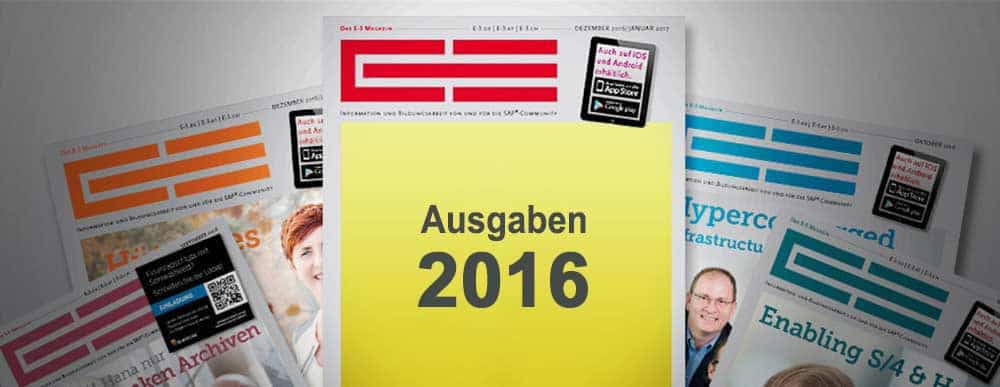Big Data in the service of medicine


SAP's new solutions for personalized medicine are making an important contribution to the future of healthcare. Dell is currently developing a tailor-made infrastructure to ensure optimal operation of the new solutions.
In contrast to conventional medicine, personalized medicine takes the approach of not only treating patients according to a pure disease diagnosis, but also taking into account their specific individual circumstances - and thus achieving significantly faster and better results.
The human genome plays an important role here, as individual genetic predisposition has a major influence on the development and correct treatment of a large number of serious diseases - from diabetes and cardiovascular diseases to Alzheimer's and cancer. In addition, numerous drugs have different effects under different genetic conditions.
If a patient's genome is known, it is therefore possible to determine a therapy that is precisely tailored to this individual person. The prerequisites for this are now basically in place.
When the first human genome was sequenced a good ten years ago, it was still a very expensive undertaking, costing several million US dollars. The technology is now so advanced that genomes can also be decoded for individual patients at an affordable cost.
However, if doctors want to carry out personalized therapies on this basis, they have to deal with gigantic amounts of data. A patient's genome consists of around three billion base pairs; a doctor cannot simply look at and interpret such a gene sequence.
They need IT tools that process this information for them and alert them to important deviations or changes. In addition, the individual genomes must be compared with reference data from studies and the patient's own clinical results if the ideal therapy is to be determined.
Data in one system
SAP has developed a completely new product line to support the medical sector in meeting these challenges. It is based on the Hana in-memory computing platform and enables hospitals, pharmaceutical companies and research institutions to gain valuable insights from big data.
The basis for this is the SAP Foundation for Health solution. It was specifically designed to be able to use and evaluate data from medical research sources, electronic patient records and gene sequences in a single system.
To this end, it provides a data warehouse model for clinical information, offers industry-specific data integration management and supports real-time analysis of large volumes of structured and unstructured data. This makes the solution particularly suitable for:
- Real-time analyses in research and development, genomics and other areas of modern biology, also known as "-omics" disciplines;
- Patient group formation and analysis as well as patient trial allocation;
- Real-time analysis of large volumes of structured and unstructured data (texts);
- advanced solutions for collaboration in the healthcare sector.
The software delivers reliable and trustworthy results, as it offers comprehensive data transparency and users have complete control over the use, processing and evaluation of the data.
Based on SAP Foundation for Health, SAP is also developing further solutions for individual aspects of personalized medicine. The first of these, SAP Medical Research Insights, has already been completed. Its task is to enable doctors to compare gene sequences of patients or patient groups quickly, easily and securely.
SAP developed this solution together with the National Center for Tumor Diseases (NCT) in Heidelberg, one of the leading institutions in the fields of patient care, cancer research and cancer prevention.
With SAP Medical Research Insights, the NCT was able to replace an outdated system in which medical staff had to search countless databases, compile patient lists, print patient files and manually check whether patients met the criteria for clinical trials.
This required reviewing every single file, which made compiling and analyzing patient data extremely complicated and time-consuming.
In contrast, SAP Medical Research Insights offers the following options:
- Clinical researchers can filter and group patients according to a variety of attributes, identify candidates for clinical trials according to selected criteria, perform survival time analyses using the Kaplan-Meier method and create and graphically visualize estimates of the further course of the disease or recovery from real-time data;
- Specialists in research and development departments of life sciences companies can quickly analyze genomics, proteomics and clinical data from multiple sources to gain critical medical insights to develop drugs, devices and services for better personalized treatment;
- Clinical researchers and specialists in research and development departments can create clear graphs of results to identify trends and correlations for specific patient groups and improve analysis to identify candidates for clinical research projects.
SAP has already announced further special solutions based on SAP Foundation for Health. These include applications for the Internet of Things to collect and analyze data from individual medical devices, for example to measure patients' blood sugar levels - and thus make it possible to continuously monitor the health of chronically ill patients.
Prefabricated software-hardware bundles
In order to ensure optimal operation of the new solutions, Dell is working with SAP and Intel on a tailor-made infrastructure. Based on Hana-certified Dell products, Dell's Global SAP Center of Excellence is currently developing a reference architecture whose components are specifically selected and coordinated to meet the requirements of the solutions.
One of the key challenges here is speed. The data processing processes and cycles must be coordinated in such a way that idle times - i.e. idle processes - are excluded, the systems are fully utilized throughout and no unnecessary delays occur as a result.
This is the only way to ensure that the huge volumes of medical data, e.g. that of a human genome, can be processed and analyzed in real time. This reference architecture will support both the basic SAP Foundation for Health platform and the SAP Medical Research Insights solution based on it, as well as all other future solutions.
To this end, it supplies ready-made software-hardware bundles including supplementary services. Healthcare facilities, organizations and companies will therefore be able to introduce the solutions quickly and operate them reliably in future. Last but not least, the reference architecture also provides them with a standardized infrastructure for worldwide use.





